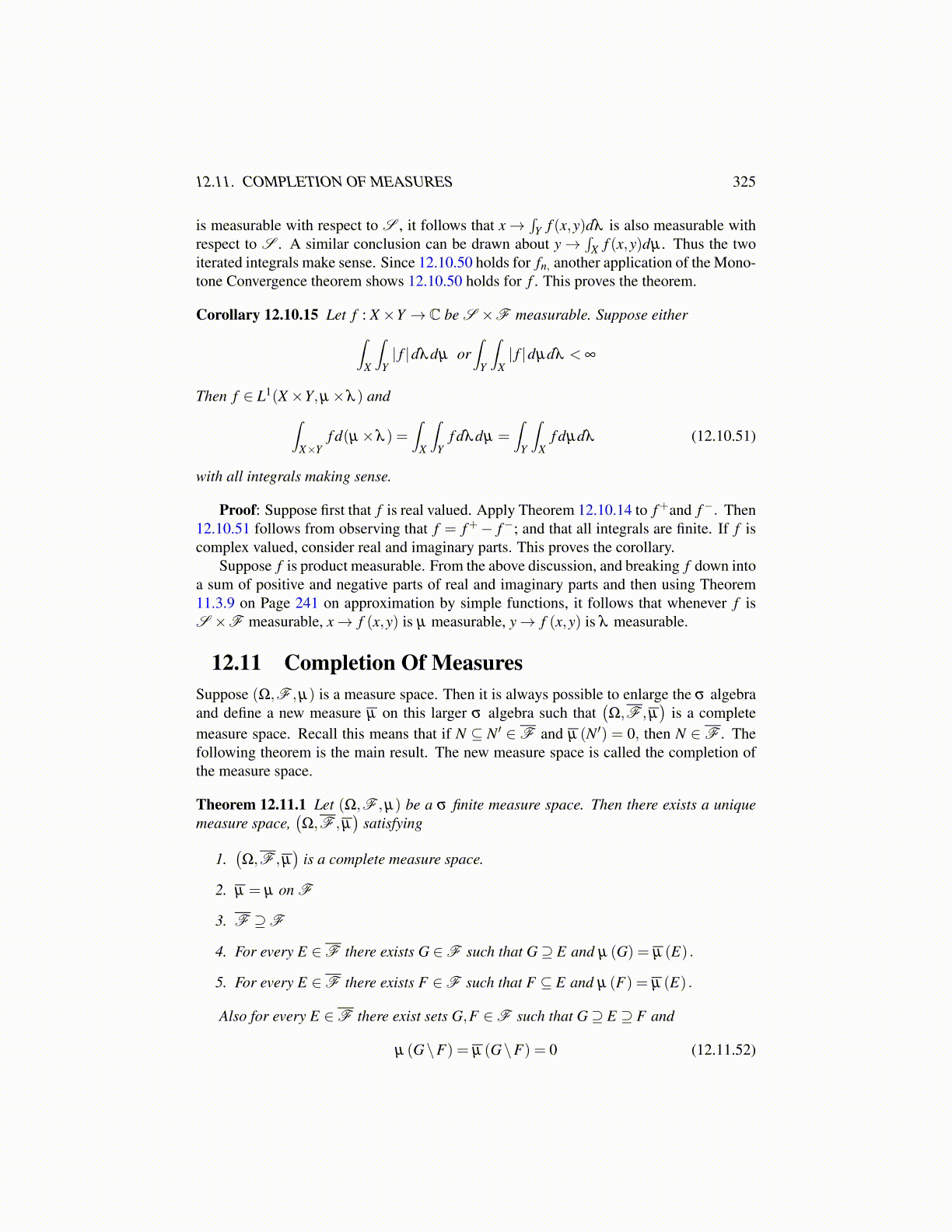
12.11. COMPLETION OF MEASURES 325
is measurable with respect to S , it follows that x→∫
Y f (x,y)dλ is also measurable withrespect to S . A similar conclusion can be drawn about y→
∫X f (x,y)dµ . Thus the two
iterated integrals make sense. Since 12.10.50 holds for fn, another application of the Mono-tone Convergence theorem shows 12.10.50 holds for f . This proves the theorem.
Corollary 12.10.15 Let f : X×Y → C be S ×F measurable. Suppose either∫X
∫Y| f |dλdµ or
∫Y
∫X| f |dµdλ < ∞
Then f ∈ L1(X×Y,µ×λ ) and∫X×Y
f d(µ×λ ) =∫
X
∫Y
f dλdµ =∫
Y
∫X
f dµdλ (12.10.51)
with all integrals making sense.
Proof: Suppose first that f is real valued. Apply Theorem 12.10.14 to f+and f−. Then12.10.51 follows from observing that f = f+− f−; and that all integrals are finite. If f iscomplex valued, consider real and imaginary parts. This proves the corollary.
Suppose f is product measurable. From the above discussion, and breaking f down intoa sum of positive and negative parts of real and imaginary parts and then using Theorem11.3.9 on Page 241 on approximation by simple functions, it follows that whenever f isS ×F measurable, x→ f (x,y) is µ measurable, y→ f (x,y) is λ measurable.
12.11 Completion Of MeasuresSuppose (Ω,F ,µ) is a measure space. Then it is always possible to enlarge the σ algebraand define a new measure µ on this larger σ algebra such that
(Ω,F ,µ
)is a complete
measure space. Recall this means that if N ⊆ N′ ∈F and µ (N′) = 0, then N ∈F . Thefollowing theorem is the main result. The new measure space is called the completion ofthe measure space.
Theorem 12.11.1 Let (Ω,F ,µ) be a σ finite measure space. Then there exists a uniquemeasure space,
(Ω,F ,µ
)satisfying
1.(Ω,F ,µ
)is a complete measure space.
2. µ = µ on F
3. F ⊇F
4. For every E ∈F there exists G ∈F such that G⊇ E and µ (G) = µ (E) .
5. For every E ∈F there exists F ∈F such that F ⊆ E and µ (F) = µ (E) .
Also for every E ∈F there exist sets G,F ∈F such that G⊇ E ⊇ F and
µ (G\F) = µ (G\F) = 0 (12.11.52)